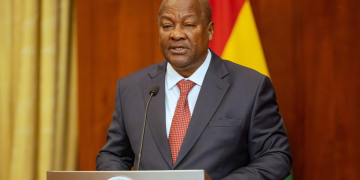Interest rates in major economies are expected to fall to pre-pandemic levels because of low productivity and ageing populations, according to a forecast.
The International Monetary Fund (IMF) said increases in borrowing costs are likely to be “temporary” once high inflation is brought under control.
The Bank of England has been raising interest rates since December 2021, taking them from 0.1% to 4.25%.
This has raised mortgage payments for many homeowners.
Central banks in the UK, the US, Europe and other nations have been lifting interest rates to combat the rate of price rises, otherwise known as inflation.
In the UK, inflation is at its highest for nearly 40 years because of rising energy prices and soaring food costs. A number of factors are fuelling inflation, including Russia’s invasion of Ukraine which has helped drive up energy costs.
However, in a blog the IMF said that “recent increases in real interest rates are likely to be temporary”.
It added “When inflation is brought back under control, advanced economies’ central banks are likely to ease monetary policy and bring real interest rates back towards pre-pandemic levels.”
The IMF did not say, however, exactly when interest rates were set to fall back to lower levels.
The Washington-based financial institution said ageing populations would be one factor likely to lower inflation.
Explaining why older people affect inflation, George Godber, fund manager at Polar Capital, said that they tend to spend less.
“The amount that you spend relative to your income is highest when you’re in your 20s, 30s and 40s – often that’s maybe young families, when you’ve got households forming, you’ve got couples coming together, they tend to spend the most when they decorate and buy a car or whatever, and you as you get older in life you slow down your consumption,” he told the BBC’s Today programme.
Read Also: Myanmar military airstrike kills at least 53 – witnesses
“There’s less heading to Glastonbury and nights out on the town, there’s more sitting at home and watching the Antiques Roadshow, so therefore your spending patterns sort of reduce and you save more and so an ageing population tends to be disinflationary.”
Andrew Bailey, governor of the Bank of England, said recently that in the UK, the share of adults aged between 20 and 59 years-old has fallen to below 65% in the past decade “and it is set to decline further in the coming years”.
He said that this has been driven by a decline in birth rates as well as people living for longer.
The IMF also said low productivity – the measure of how many goods and services are produced – would bring inflation down.
In a speech last month, Mr Bailey said that prior to the financial crisis in 2008, UK productivity had been boosted by the country’s manufacturing sector.
“But following the financial crisis, manufacturing productivity growth fell back sharply. This fall in manufacturing productivity is the main cause of the slowdown,” he said.
Just prior to the Covid pandemic, the UK’s interest rate was 0.75% but the Bank of England cut it twice in March 2020 to 0.1% as the country entered lockdown.
The rate of inflation has risen steadily over the past couple of years and hit 10.4% in February – more than five times higher than the Bank of England’s 2% target.
Following the decision to raise UK interest rates again in March, the Bank of England said that it expected inflation “to fall sharply over the rest of the year”.
This is due to the government’s continuing help with household heating bills through the Energy Price Guarantee scheme as well as falling wholesale gas prices.
However, Mr Bailey declined to say whether he believed that interest rates had reached a peak.
SOURCE: BBCNEWS


























